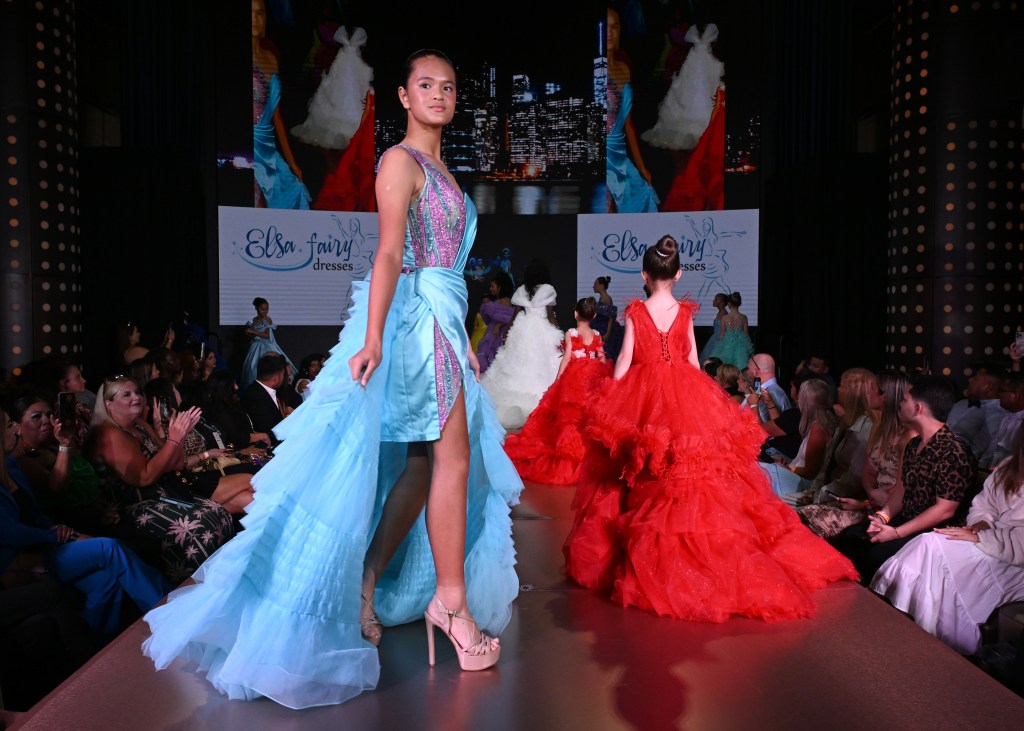For generations, fashion has been a powerful economic engine in New York City. In 2022, the local industry — fashion retail, wholesale and distribution, and textile, apparel, footwear and jewelry manufacturing — generated more than $50 billion in direct sales, $45 billion in indirect sales, and more than 130,000 jobs. The ecosystem includes retailers, designers, suppliers and manufacturers, media, investors, and real estate.
But the city’s fashion business is shrinking. It employs 50,000 fewer people than it did 10 years ago, and the inflation-adjusted market value of the goods and services it produces has declined steadily. Most garment manufacturing has moved to less expensive locations overseas, and the talent pipeline may be shrinking: completions in fashion education fell by 30% in 2022 from a peak in 2016.
Meanwhile, many specialty stores such as Barneys New York and Opening Ceremony have shuttered, making it harder for new designers to get noticed. The industry is consolidating, especially in luxury, towards European conglomerates, putting intense pressure on independent brands. Some brands are now shifting from New York Fashion Week, which started yesterday, to events overseas to reach more international buyers and press.
Powerful trends help explain these shifts, beginning with the rise in e-commerce, which has spurred many brands to rethink store footprints. The costs of living and doing business in the city continue to rise, and social media has unleashed new cadres of influencers who don’t need to be headquartered in a fashion capital.
We explain these and other findings in our new report, “At a crossroads: New York’s status as a global fashion capital,” written with McKinsey colleagues in collaboration with the Partnership of New York City through its nonprofit affiliate, the New York City Partnership Foundation.
Despite the challenges, industry and civic leaders believe a comeback is possible. The city is a global leader in fashion-adjacent industries such as technology and finance, and enjoys diversity and a truly international culture that other fashion capitals such as Paris, Milan, and Copenhagen can’t match.
Our research doesn’t point to a future state; a broad range of stakeholders will need to come together to define success metrics and goals. But what we’ve learned from decades of research and experience serving industries around the world suggests approaches that could help New York’s fashion sector bolster its global relevance:
- Helping new designers get started: Emerging designers say they need the most help finding space. A centralized designer campus, for example, could offer subsidized workspaces with pooled resources and mentorship. One example is Station F, the world’s largest startup campus in central Paris, which offers a full range of services, workshops, and even apartments for aspiring entrepreneurs.
- Helping emerging brands scale: Many designers struggle to secure long-term funding and visibility. An accelerator could connect them with mentors and investors, while a storefront in a prime location could expand their access to consumers. London’s 12 Piccadilly Arcade, for example, is a pop-up boutique for emerging and indie brands.
- Building a more capable and diverse workforce: In industries around the world, we see ecosystems flourish when education and employers partner to support diversity. In New York, fashion schools could collaborate with companies to help students become fluent in realms beyond design, such as technology and sustainability — and help underrepresented talent enter and rise through the ranks.
- Revitalizing industry demand for New York fashion: Many industry leaders say New York’s fashion sector should now re-engage a global audience. New York Fashion Week could host a wider array of events and programming, for example. Conferences such as South by Southwest in Austin converge multiple industries, such as tech, film, and music.
We’ve found that most successful interventions share some common elements, including mechanisms to convene an array of ecosystem players. In this case, they could include local government, fashion industry veterans, retailers, schools, and real estate leaders. Together, they could help mobilize city-wide initiatives and drive concerted action — including investment.
Diversifying revenue streams and forging strategic corporate partnerships could reduce the industry’s need to continuously seek new financial support or sponsors.
In short, this critical moment requires sustained collaborative efforts among private and public players in fashion and adjacent industries. Together, they can find new ways to support talent and new brands, reignite the ecosystem, and preserve New York’s legacy as a uniquely diverse, creative, and innovative global fashion capital.
Grunberg, a partner in McKinsey & Company’s New York office, is a leader in the firm’s apparel, fashion, and luxury group in North America. Her colleagues, Linda Liu, Colleen Baum, and Maurice Obeid, also made contributions to the report.
